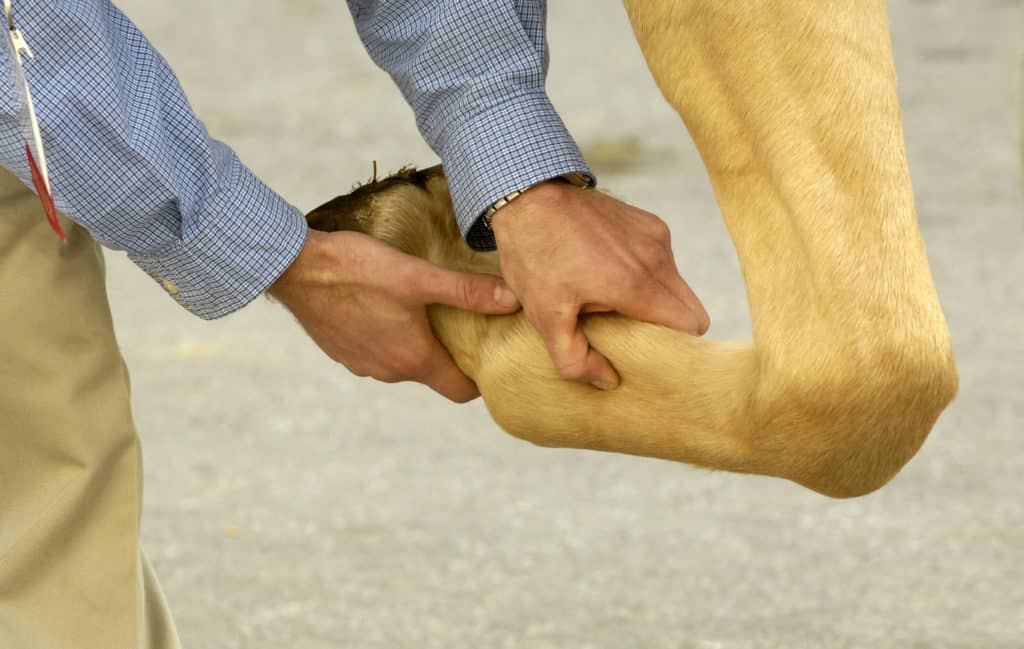
How Do Old Horses Spend Their Days?
In a study monitoring how horses budgeted their time, researchers found age and orthopedic pain didn’t deter horses from moving around when given the opportunity.
Prevention, diagnosis, and treatment of leg lameness

In a study monitoring how horses budgeted their time, researchers found age and orthopedic pain didn’t deter horses from moving around when given the opportunity.

Scientists found that a professional’s light, steady, straight pull at a slightly downward angle relieved pain at several sites along the equine spine.

Using sensors, scientists found hoof breakover lasts a shorter amount of time in certain gaits when the horse has wedges, rolled-toe shoes, or palmarly placed shoes compared to normal shoes.

Use this visual guide to learn about the technologies your veterinarian might use to look inside your horse and why.

The editors of The Horse: Your Guide To Equine Health Care have scoured our archives and gathered our top lower limb lameness content. Sponsored by Hallmarq Veterinary Imaging.

Poll pain can cause performance, behavior, and welfare issues for horses. Learn how vets diagnose and treat it.

Pain related to acute issues such as colic or hoof abscesses is usually obvious. But sometimes the signs of chronic pain are more subtle. Can you tell if your horse is hurting?

Learn what we know about CBD’s efficacy and potential use in horses.

To support workforce development, a University of Connecticut team seeks to understand which practical skills and knowledge are most useful for nonveterinarians in the equine rehabilitation industry.

In the four months since the MILEPET scanner’s installation at UC Davis Veterinary Hospital, veterinarians have imaged 100 horses; more than half were performance and pleasure horses.

Learn about current ways to manage the most common cause of lameness in equine athletes. Sponsored by NoltrexVet.

Dr. Marty Adams shares his thoughts on the best joint supplement ingredients for performance horses.

He might seem perfect—but before you call him yours, determine if a horse is sound and serviceable for the job at hand and if you can live with his inevitable flaws.

Read about three real-life examples of equine athletes that made full recoveries from their injuries, including their diagnostic challenges, rehab modalities, and recovery details.

We asked two experts how they approach laminitis and try to keep affected horses comfortable.

Learn what steps you and your veterinarian can take to get to the bottom of subtle horse health problems.
Stay on top of the most recent Horse Health news with
"*" indicates required fields